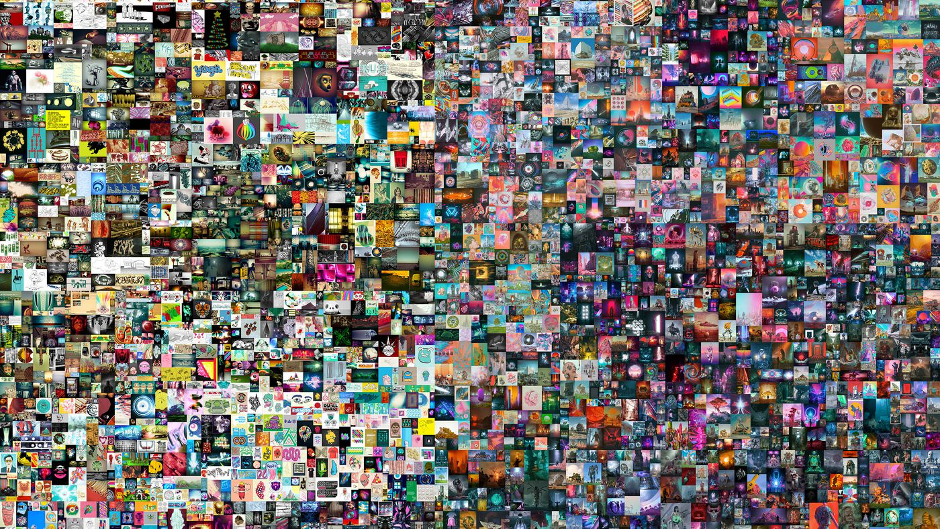
Ever wondered why wealthy people buy .jpeg images for millions of dollars?
You’re not the only one. In this article, you’re about to find out what crypto art is and why there’s so much fuss around this subject.
We’ll begin with the obvious – what is crypto art?
Without going into too many technicalities (we’ll dive into that below), crypto art is basically a digital artwork that you can purchase with crypto. For example, it can be a song, a video, a drawing, etc.
Hold your wallets; unfortunately, the Nyan cat gif has already been sold for $904,149.
‘Then why can I see it?’
Here’s where the ‘confusion’ around crypto art begins, and we’re about to solve it.
Why would anyone buy crypto art if anyone can download it?
This is a fantastic question! One which is really hard to answer since it poses many underlying questions.
Basically, the point of owning digital art is to make it one-of-a-kind. By owning it, you ensure that it’s yours in a public ledger and has value, despite the fact that anyone can have access to it.
Some people purchase these artworks relying on the thought that they might increase in value over time. In other words, they’re viewing them as an investment opportunity.
Other people collect these new odd forms of artwork just for the bragging rights.
And there are the artists, happy that they can uniquely sell their artwork.
Everyone’s happy, right?
Not quite.
Since the digital artwork can be replicated infinitely by anyone with a laptop, then the next questions arise:
How can you own art that can be copy-pasted?
The validity of you owning the art stands in the NFT attached to it, not the piece of art itself.
‘Hold up! NF what?’
The NFT or the non-fungible token is linked to that digital artwork, and that’s how you can show you’re the legit owner of the piece.
Don’t worry; we’re going to tell you what an NFT is.
So, NFT or non-fungible token means that something is unique and irreplaceable. Most NFTs belong to the Ethereum blockchain, but unlike Ethereum (the cryptocurrency itself), it works differently. As in it can store extra information. Nowadays, other blockchains can store NFTs.
How can something that can be replicated?
For example, the Nyan gif in the beginning. How can it have any value and be considered unique and irreplaceable? Especially when you just saw it at the beginning of this article!
Perhaps it would be easier if we’d tell you what the opposite of an NFT is.
A Bitcoin is fungible, meaning that you can trade it for another Bitcoin, and you end up with the same thing. However, a sculpture from the 12th century is non-fungible. You can still trade it, but you’ll never get the same thing. Even if someone can recreate it, a true art connoisseur would still know the difference.
That’s basically what happens when it comes to the art you purchase. They have an NFT attached that shows everyone on the blockchain that it’s yours and only yours. Even if you decide to sell it, the data will appear on the blockchain. You can visit Porch.com if you want to read more about NFT art at home.
Let’s give you an example; if I buy sculpture.gif from Darlene and I sell it to Marcus, the blockchain will show all of these transactions. This way, Jacob can’t claim that the sculpture.gif is his even if he can download it on his computer and send it to other friends and so on. The imprint on that sculpture.gif on the blockchain belongs to me. No matter how many times they replicate it, the true ownership is mine.
And if you think that’s not something that can persuade you to get into crypto art, then you should take a look at what these creators earned through their crypto art:
What are the 5 most expensive pieces of NFTs ever sold?
1. Everydays: The First 5000 Days by Beeple for $69.3 million.

2. CryptoPunk #7523 by Larva Labs for $11.7 million.
3. CryptoPunk #7804 by Larva Labs for $7.56 million.

4. CryptoPunk #3100 by Larva Labs for $7.58 million.
5. Crossroad by Beeple for $6.6 million.
https://twitter.com/i/status/1364745727889530883
It’s hard to believe that people would buy these artworks for such a large amount of money. But they’re not the only ones. You can search for tons of digital artwork online and be amazed at how much people spend on them. For some people it’s just as fun and exciting as crypto gambling.
Are NFTs the future?
The boom we saw in NFTs is undeniable. The millions of dollars invested in crypto art is mind-blowing. However, after the latest environmental concern related to NFTs, the hype dwindled a bit. With that said, I wouldn’t be surprised if they’d make an incredible comeback soon enough. After all, in the world of crypto, you never know what will surprise you next.










